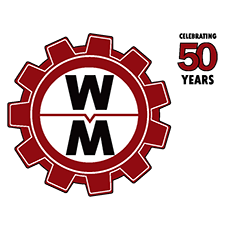Lean manufacturing is a type of production process that is aimed at adding value to the end customer at every step in the process. This means that the goal of the lean model is to reduce waste at every level during manufacturing and shipping. Waste is anything that can cause delays or defects that result in added production costs. These are the 7 kinds of waste in the lean manufacturing model:
- Production defects
- Transportation
- Overproduction
- Waiting
- Processing
- Movement
- Inventory
Try and identify the areas of waste in your shop.
Are your machine operators waiting for materials to arrive because your inventory is low? Are finished parts sitting around while you wait for transportation to arrive?
The 7 areas of waste influence one another and contribute to the overall increase in the cost of your products. Your solution could be as simple as organizing materials or labelling tool storage. Another solution could be to re-arrange your shop floor or invest in improved inventory tracking software.
By overcoming these obstacles you can produce products more efficiently and get them to the consumer faster—and that means you can offer lower prices and gain a loyal customer base.
Check out the introduction to lean manufacturing infographic.
It outlines the processes you will need to put in place and the tools you can use to help achieve your goals. It also outlines the common obstacles that shop owners face when attempting to switch to the lean manufacturing model.
Other articles you might be interested in:
Press Brake Maintenance: Save by Switching to Electric
Shop Talk: The True Cost of Downtime in the Manufacturing Industry


